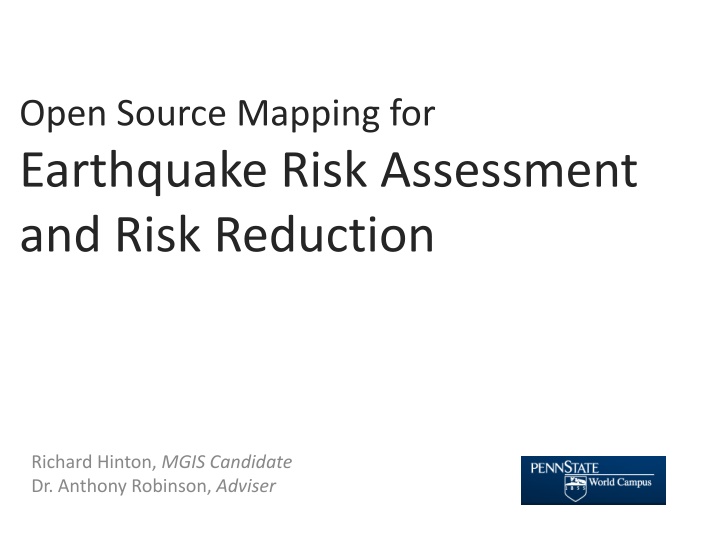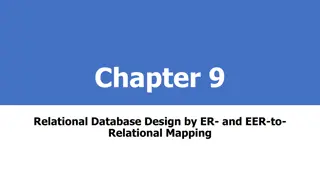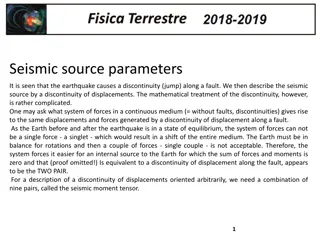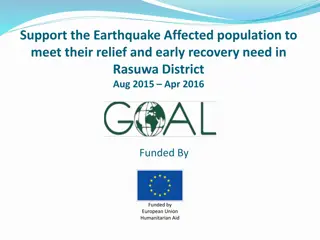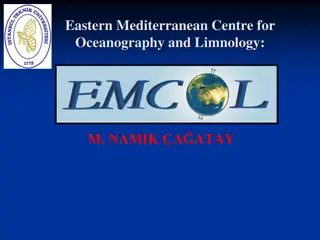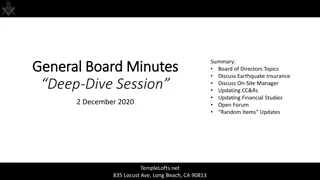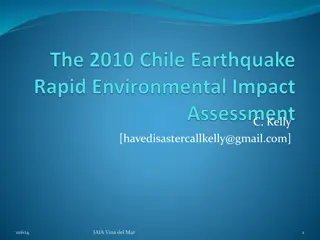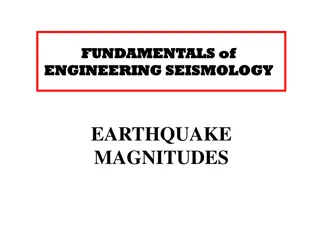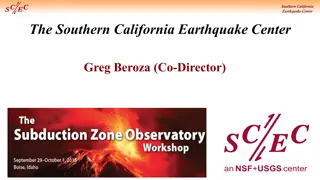Open Source Mapping for Earthquake Risk Assessment and Reduction
This study explores the use of open-source mapping tools for earthquake risk assessment and reduction, emphasizing the importance of utilizing Free and Open Source Software (FOSS) in disaster management. By leveraging freely available geospatial data and software, individuals can identify vulnerable areas and infrastructure, particularly in developing countries with limited geospatial infrastructure.
Download Presentation

Please find below an Image/Link to download the presentation.
The content on the website is provided AS IS for your information and personal use only. It may not be sold, licensed, or shared on other websites without obtaining consent from the author.If you encounter any issues during the download, it is possible that the publisher has removed the file from their server.
You are allowed to download the files provided on this website for personal or commercial use, subject to the condition that they are used lawfully. All files are the property of their respective owners.
The content on the website is provided AS IS for your information and personal use only. It may not be sold, licensed, or shared on other websites without obtaining consent from the author.
E N D
Presentation Transcript
Open Source Mapping for Earthquake Risk Assessment and Risk Reduction Richard Hinton, MGIS Candidate Dr. Anthony Robinson, Adviser
Outline Introduction Emergency Response Cycle Current Geospatial Frameworks Purposed Methodology Data Considerations Open Source in Disaster Management The Road Ahead Closing thoughts
Current Geospatial Frameworks/Initiatives Developed countries often have preparedness plans available www.ready.gov www.ncdp.mailman.columbia.edu
Current Geospatial Frameworks/Initiatives www.dpri.kyoto-u.ac.jp www.gazi.edu.tr www.fema.gov/hazus
Motivation Developing countries often lack the geospatial infrastructure Use GIS to facilitate disaster reduction through vulnerability assessment Use only Free and Open Source Software (FOSS) and data Can help minimize procurement resources Provides agility and flexibility (no vendor lock-in) End result: most anyone, with some training, can identify areas and infrastructure vulnerable to earthquakes, using only freely available data and software
Proposed Methodology 5 stages: 1. Site location 2. Search for and procure data 3. Identify gaps and resolve if possible 4. Edit data to ensure compatibility 5. Perform analysis
Proposed Methodology cont Not used to predict casualty figures To predict casualty figures HAZUS-MH- Hazard U.S. Multi Hazard www.fema.gov/hazus CATS - Consequences Assessment Tool Set www.saic.com/products/security/cats/
Proposed Methodology cont PAGER Prompt Assessment of Global Earthquakes for Response http://earthquake.usgs.gov/research/pager/ InaSAFE - IndonesiaScenario Assessment for Emergences inasafe.readthedocs.org
Data Considerations Data Sources: Open Source Free Including Crowd-sourced Primary Data Concerns: Quality Usability Security Crowd-sourced proven useable: Geocoding data project - proved to be 85% accurate www.usaid.gov Ushahidi-Haiti Project www.ushahidi.com
Data Considerations Common datasets include: Administrative boundaries and populated places Hydrography Topography Land cover and land use Utilities Critical infrastructure Demographic data Disaster specific datasets for earthquakes: Fault lines Historical seismic activity Soil classification
Data Considerations Issues with data from various sources: Access Interoperability Scale Accuracy Currency Coordinate system Redundancy Issues with data from developing countries Slow/intermittent Internet connection
DATASETS Administrative Boundaries FEATURE TYPE Admin level 1 Admin level 2 Admin level 3 Populated place Roads Airports Railroads Sea Ports Bridges Rivers Coastline Reservoirs Floodplains Lakes Dams Canals Forest Agriculture Urban/Rural Water/sewer line Oil/gas line Electrical network Power plant location Fire/Police/EMS stations Hospitals Military installation Government buildings Schools Community centres Elderly care facilities Contour lines Spot elevation DEM Historical seismic locations Fault lines Population distribution POTENTIAL SOURCE(S) OSM SEDAC GeoNetwork (FAO) GISTPortal OSM GeoNetwork (FAO) GISTPortal Data Acquisition Transportation Hydrography OSM SEDAC GeoNetwork (FAO) UNEP Land Use OSM SEDAC GeoNetwork (FAO) Utilities Critical Infrastructure: building footprints where possible OSM GISTPortal Topography GeoNetwork (FAO) GLCF Seismic USGS GeoTECH SEDAC GeoNetwork (FAO) ISRIC GeoNetwork (FAO) Demographic Geological Surfical geology/Soil
Open Source in Disaster Management www.gfdrr.org/gfdrr/opendri inasafe.readthedocs.org www.opengeospatial.org/ Quantum GIS www.qgis.org/ UNOSAT www.unitar.org/unosat/
The Road Ahead 1-Oct 8-Oct 15-Oct 22-Oct 29-Oct 5-Nov 12-Nov 19-Nov 26-Nov 3-Dec 10-Dec 17-Dec Find data 14 Identify gaps and rectify (if possible) 14 Prep data for and import to GIS 14 Perform analysis 14 Produce maps 7 Write up results 14 Create presentation 7
Closing Thoughts Open Source has been used with success Community involvement With little training, areas and infrastructure at risk can be identified Every community has it s own specific needs Communities change over time
